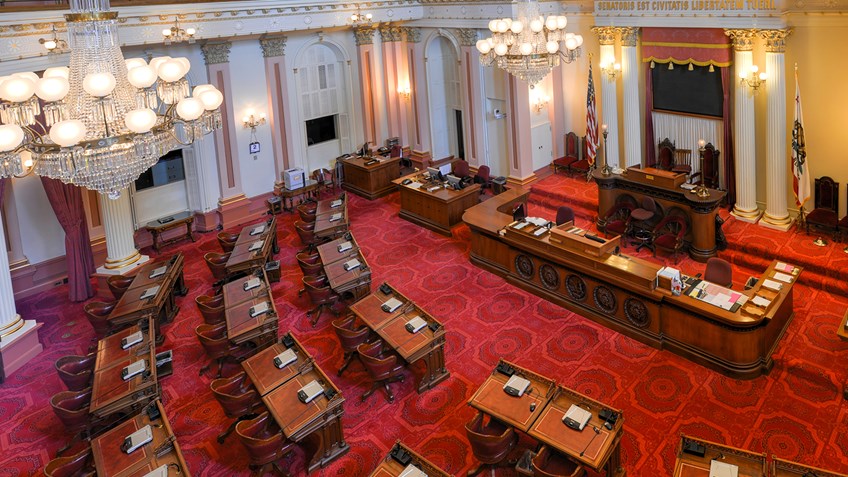
California State Capitol. (Photo: Kevin Sanders for California Globe)
Some Legislative Drafting Notes
‘Such a simplistic statement without explanation could jeopardize the amending legislation if a judge were to review this’
By Chris Micheli, June 11, 2025 2:30 am
In reviewing hundreds of bills during the House of Origin deadline week, I came across several provisions of legislation worth reviewing. The following are some of the notes I took:
Amending a Voter Initiative
In a bill amending a bond measure, the Legislative Counsel’s Digest explained that the California Wildlife, Coastal, and Park Land Conservation Act, an initiative measure approved by the voters in the June 7, 1988, statewide primary election, provided bond funds for wildlife, coastal, and parkland conservation. The initiative measure authorizes the act to be amended by a 2/3 vote of the Legislature if the amendment is consistent with the purposes of the act.
Specifically, in Section 6 of the ballot measure, it provides: “The Legislature may amend this act by statute passed in each house of the Legislature by rollcall vote entered in the journal, two-thirds of the membership concurring, if the statute is consistent with the purposes of this act. However, no allocation of funds may be reallocated except in accordance with Sections 5919 arid 5922 of the Public Resources Code. No changes shall be made in the way in which funds are appropriated pursuant to Sections 5907 and 5921 of the Public Resources Code.”
In Section 2 of the bill amending this bond action, it simply says: “Section 1 of this act is an amendment to the California Wildlife, Coastal, and Park Land Conservation Act (Division 5.8 (commencing with Section 5900) of the Public Resources Code) within the meaning of Section 6 of that act, and is consistent with the purpose of that act.”
I have written extensively before that such a simplistic statement without explanation could jeopardize the amending legislation if a judge were to review this. I believe most members of the judicial branch would be looking for at least a brief explanation in the legislation to justify why the Legislature believes a particular bill’s amendments are consistent with the purposes of an act.
Exempting a New Law from Existing Law
I would describe this as being akin to a notwithstanding clause. In this particular bill, the Legislative Counsel’s Digest states:
Existing law, the State General Obligation Bond Law, generally sets forth the procedures for the issuance and sale of bonds governed by its provisions and for the disbursal of the proceeds of the sale of those bonds. CAHFCA would declare that its provisions are not subject to the State General Obligation Bond Law. CAHFCA would also declare that its provisions are severable.
In a bill section, it states: “This act shall not be subject to the requirements of Part 3 (commencing with Section 16650) of Division 4 of Title 2 of the Government Code.” As a result of this provision, the new law is not subject to existing law – the State GO Bond Law.
Is this sufficient?
I came across the following statement in a recent bill: “The provisions of this act are retroactive and apply to any case pending as of January 1, 2026.” California courts generally look for a clear statement of retroactivity in a bill, which this bill has. But, query, would it be better served with some findings and declarations or some other explanatory note why the bill’s provisions are being made retroactive?
Interesting Plus Section
A bill this Session contains the following statement: “This bill is not intended to modify or weaken existing protections. In the event of a conflict between the provisions of this bill and any existing state law or regulation, the more stringent provision shall prevail.” Occasionally, I have come across a similar provision in legislation and in statute. This type of provision is trying to keep intact any existing state law or regulation. Sometimes, a similar provision is used in dealing with state and local laws.
Sometimes used for sales/use tax bills:
When making changes to the California sales/use tax law, bills often contain a delayed operative date in order to provide sufficient time in which to make necessary changes (e.g., computer processing systems) before implementing the law change. As a result, you might see the following in a bill: “This act provides for a tax levy within the meaning of Article IV of the California Constitution and shall go into immediate effect. However, the provisions of this act shall become operative on the first day of the first calendar quarter commencing more than 90 days after the effective date of this act.”
Here’s how I think a tax levy statement should read:
The current tax levy language in bills is the following: “This act provides for a tax levy within the meaning of Article IV of the California Constitution and shall go into immediate effect.”
However, as with other simple statements, I believe a tax levy statement should contain an explanation for its designation. As a result, I think the language should read as follows: “This act provides for a tax levy within the meaning of Article IV, Section 8(c)(3) of the California Constitution, because it would change the base, rate, or burden of a tax, and shall go into immediate effect.”
Removing duplicative language:
I came across the following statement in a recent bill: “The department may, in its discretion, award a grant described in Section 49041 to a small-scale grocery store.”
What is my issue with this provision? The word may means there is discretion provided to the department whether it will award a grant. So, it does not need to be restated. In other words, I believe this provision should read as follows: “The department may award a grant described in Section 49041 to a small-scale grocery store.”
General provisions of the California Codes contain the following provision: “Shall” is mandatory and “may” is permissive. Because the term “may” is permissive, a statute does not need to contain the phrase “in its discretion” as that is already the meaning of the word “may.”
I hadn’t seen this provision before, but it makes sense to have in unique circumstances:
This was a new one to me: “This section shall remain in effect only until January 1, 2028, and as of that date is repealed. The repeal of this section shall automatically revoke any general order authorized by this section.” I would assume that any order or regulation that was promulgated under a statute would be repealed when the underlying statute is repealed. But, it is better to be clear that this is to happen rather than leave it to interpretation.
Lengthy urgency clause statement (which I strongly support):
I think this is a great example of a detailed urgency clause statement and I think all of them should be this detailed.
This act is an urgency statute necessary for the immediate preservation of the public peace, health, or safety within the meaning of Article IV of the California Constitution and shall go into immediate effect. The facts constituting the necessity are:
California is now experiencing a severe property insurance availability crisis resulting in needed coverage, typically provided by admitted insurers and licensed surplus line brokers, often being unavailable in the normal insurance market. Consumers who cannot obtain property insurance through admitted or surplus lines insurers are also having to purchase more insurance through the California FAIR Plan Association, and the number of policies in the association has continued to grow. Because of this increase and the growing wildfire risk in the state, the FAIR Plan must be ready for catastrophic events, for which FAIR Plan needs access to as many financial tools as possible at all times.
The Legislature finds that access to basic property insurance suitable for protection of all types of habitational risk, including personal and commercial lines of insurance, has become increasingly unavailable and that, as a result, all Californians may suffer because of this unavailability. In order for insurance consumers to obtain adequate policy coverage from the California FAIR Plan, which is subject to regulation by the commissioner, as soon as possible, it is necessary that this act take effect immediately.
Compare the one above to the following, which is too simplistic:
On the other hand, I am not a fan of simplistic statements that could be challenged in ct and I am not convinced that a judge will be satisfied with one like the following:
This act is an urgency statute necessary for the immediate preservation of the public peace, health, or safety within the meaning of Article IV of the California Constitution and shall go into immediate effect. The facts constituting the necessity are:
To protect California consumers from high electricity bills, it is necessary for this act to take effect immediately.
- Bonds and Undertakings in California - December 21, 2025
- Pleadings in Eminent Domain Cases - December 20, 2025
- Complaint Resolution in Child Support - December 20, 2025




